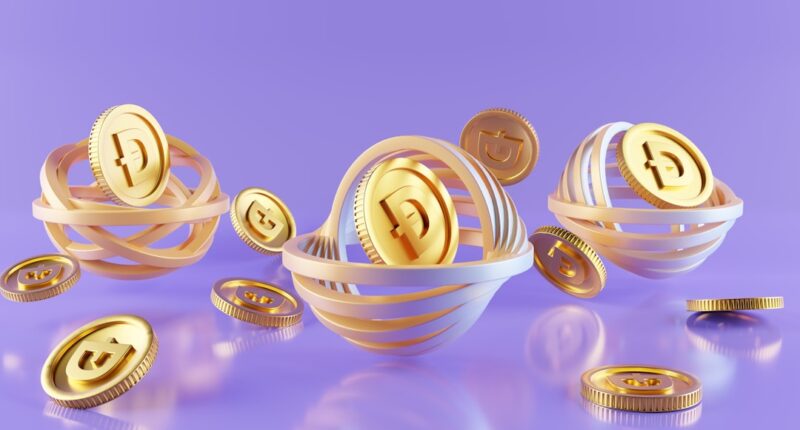Non-fungible tokens (NFTs) have emerged as a revolutionary concept in the digital landscape, representing ownership of unique digital assets on the blockchain. Unlike cryptocurrencies such as Bitcoin or Ethereum, which are fungible and can be exchanged on a one-to-one basis, NFTs are distinct and cannot be replaced with something else of equal value. This uniqueness is what makes NFTs particularly appealing to artists, musicians, and creators who wish to monetize their digital works.
The underlying technology of NFTs is based on blockchain, which ensures transparency, security, and immutability of ownership records. As a result, NFTs have gained traction in various sectors, including art, gaming, music, and even virtual real estate, creating a vibrant marketplace for digital assets. The marketplaces where NFTs are bought and sold play a crucial role in the ecosystem.
These platforms facilitate transactions between creators and collectors, providing the necessary infrastructure for listing, bidding, and purchasing NFTs. Each marketplace has its own set of features, user interface, and community dynamics, which can significantly influence the buying and selling experience. Some platforms cater specifically to artists and their works, while others may focus on gaming assets or collectibles.
Understanding the nuances of these marketplaces is essential for anyone looking to navigate the NFT space effectively. As the market continues to evolve, new platforms are emerging, each offering unique functionalities that cater to different audiences and use cases.
Key Takeaways
- NFTs are unique digital assets that represent ownership of a specific item or piece of content and are bought and sold on NFT marketplaces.
- OpenSea, Rarible, and Foundation are popular NFT marketplaces, each with its own unique features and user base.
- NFT platforms have different fee structures and costs, including gas fees, listing fees, and transaction fees, which can impact the overall profitability of selling NFTs.
- User experience on NFT marketplaces varies in terms of ease of use, search functionality, and overall design, which can affect the buying and selling experience.
- Security and trustworthiness are important factors to consider when choosing an NFT platform, including measures to protect against fraud and theft of digital assets.
Comparing NFT Marketplaces: OpenSea, Rarible, and Foundation
OpenSea is one of the largest and most well-known NFT marketplaces, boasting a vast array of digital assets across various categories. It operates on the Ethereum blockchain and supports a wide range of NFTs, from art and music to virtual real estate and domain names. One of OpenSea’s standout features is its user-friendly interface, which allows users to easily browse through collections, filter by categories, and discover trending items.
Additionally, OpenSea offers a robust search functionality that enables users to find specific NFTs or creators quickly. The platform also supports the creation of NFTs directly through its interface, making it accessible for artists who may not have technical expertise in blockchain technology. In contrast, Rarible positions itself as a decentralized marketplace that empowers creators by allowing them to issue their own tokens and set their own royalties.
This community-driven approach fosters a sense of ownership among users, as they can participate in governance decisions through the RARI token. Rarible also features a unique “minting” process that allows users to create NFTs without needing extensive technical knowledge. However, while Rarible offers a more democratic platform for creators, it may not have the same level of visibility or user base as OpenSea.
Foundation, on the other hand, takes a more curated approach by inviting artists to join the platform through an invitation system. This exclusivity creates a sense of prestige around the artworks listed on Foundation, attracting collectors who are interested in high-quality pieces from emerging artists.
Evaluating Fees and Costs on Different NFT Platforms

When considering which NFT marketplace to use, understanding the fee structure is paramount. OpenSea charges a standard service fee of 2.5% on every transaction made on its platform. This fee is relatively low compared to some other marketplaces but can add up significantly for high-value transactions.
Additionally, users must also account for gas fees associated with Ethereum transactions, which can fluctuate based on network congestion. These costs can be a barrier for new users or those looking to make smaller purchases. However, OpenSea’s extensive user base and diverse offerings often justify these fees for many collectors and creators.
Rarible’s fee structure is slightly different; it also charges a 2.5% service fee on sales but allows creators to set their own royalty percentages for secondary sales. This flexibility can be appealing for artists who want to ensure they receive ongoing compensation for their work. However, like OpenSea, Rarible users must also consider gas fees when minting or trading NFTs.
Foundation operates on an invitation-only model and charges a 15% fee on sales made through its platform. While this may seem steep compared to other marketplaces, many artists are willing to pay this premium for the curated environment and potential exposure to serious collectors that Foundation offers.
Analyzing the User Experience on NFT Marketplaces
User experience (UX) is a critical factor that can make or break an NFT marketplace. OpenSea excels in this area with its intuitive design and straightforward navigation. Users can easily create an account, connect their digital wallets, and start exploring the vast array of NFTs available for purchase.
The platform’s layout is clean and organized, allowing users to filter by categories such as art, music, or virtual worlds seamlessly. Furthermore, OpenSea provides detailed information about each NFT, including ownership history and price trends, which helps buyers make informed decisions. Rarible’s user experience is also commendable but differs in its emphasis on community engagement.
The platform encourages users to interact with one another through features like comments and social sharing options. This social aspect can enhance the overall experience by fostering connections between creators and collectors. However, some users may find Rarible’s interface slightly less polished than OpenSea’s due to its decentralized nature.
Foundation’s user experience is characterized by its exclusivity; the invitation-only model creates a sense of belonging among artists and collectors alike. The platform’s design is sleek and modern, focusing on showcasing high-quality artwork in an aesthetically pleasing manner. However, this curated approach may limit accessibility for new users who are not part of the established artist community.
Exploring the Security and Trustworthiness of NFT Platforms
Security is paramount in the world of NFTs, where significant sums of money can be at stake. OpenSea has implemented various security measures to protect users from fraud and hacking attempts. The platform employs industry-standard encryption protocols and regularly conducts audits to identify vulnerabilities in its system.
Additionally, OpenSea has introduced features such as two-factor authentication (2FA) to enhance account security further. Despite these measures, users must remain vigilant against phishing attacks and scams that can occur in any online marketplace. Rarible also prioritizes security but operates under a decentralized model that places some responsibility on users to safeguard their assets.
While this decentralization can enhance trust among community members, it also means that users must take extra precautions when interacting with the platform. Foundation’s curated approach adds an additional layer of trustworthiness; since artists are invited to join the platform based on their reputation and work quality, collectors may feel more secure purchasing from known creators. However, like any online platform dealing with digital assets, users should always exercise caution and conduct thorough research before making transactions.
Examining the Community and Audience of NFT Marketplaces

OpenSea: A Vast and Diverse Community
OpenSea’s extensive offerings and accessibility have contributed to the growth of one of the largest communities in the NFT space. This diverse audience comprises seasoned collectors and newcomers eager to explore digital art and collectibles, making it an exciting space for both buyers and sellers.
Rarible: Fostering a Sense of Belonging
Rarible’s community-driven approach creates a sense of belonging among its users. The platform encourages participation through governance mechanisms that allow RARI token holders to vote on important decisions affecting the marketplace’s future. This engagement cultivates a loyal user base that feels invested in the platform’s success.
Foundation: A Niche Community for Serious Collectors
Foundation’s audience is more niche, attracting serious collectors interested in high-quality art from emerging artists. The exclusivity of the platform cultivates a tight-knit community where artists can connect with collectors who appreciate their work deeply.
Leveraging Marketing and Promotion Tools on NFT Platforms
Marketing plays a crucial role in the success of NFT sales, as visibility can significantly impact an artist’s ability to reach potential buyers. OpenSea provides various promotional tools that allow creators to showcase their work effectively. Artists can feature their collections prominently on their profiles or participate in themed events organized by the platform to gain exposure.
Additionally, OpenSea’s integration with social media platforms enables users to share their listings easily, further amplifying their reach. Rarible takes marketing a step further by allowing creators to engage directly with their audience through social features like comments and likes on listings. This interaction can help build relationships between artists and collectors while promoting individual pieces within the community.
Foundation’s curated nature means that marketing efforts often focus on building personal brands rather than relying solely on platform tools; artists are encouraged to leverage social media channels to promote their work before it even hits the marketplace.
Tips for Success in Selling NFTs on Different Platforms
To succeed in selling NFTs across various platforms, artists should first focus on building a strong personal brand that resonates with their target audience. This involves creating high-quality artwork that reflects their unique style while also engaging with potential buyers through social media channels or community forums related to NFTs. Establishing an online presence can help artists gain credibility within the space and attract collectors interested in their work.
Additionally, understanding each platform’s specific features and audience dynamics is essential for maximizing sales potential. For instance, artists should consider participating in themed events or collaborations on OpenSea to increase visibility or utilize Rarible’s community engagement tools to foster connections with collectors directly. On Foundation, leveraging exclusivity by creating limited edition pieces can create urgency among buyers while enhancing perceived value.
Ultimately, success in selling NFTs requires a combination of artistic talent, strategic marketing efforts, and an understanding of the unique characteristics of each marketplace.
FAQs
What are NFTs?
NFTs, or non-fungible tokens, are digital assets that represent ownership or proof of authenticity of a unique item or piece of content, such as art, music, videos, or collectibles, using blockchain technology.
What are the best platforms for selling NFTs?
The best platforms for selling NFTs include OpenSea, Rarible, Foundation, and Mintable, among others. Each platform offers different features and benefits for creators and collectors.
What factors should be considered when choosing a platform for selling NFTs?
When choosing a platform for selling NFTs, factors to consider include fees, user interface, community support, marketplace reach, and the platform’s policies on copyright and intellectual property rights.
What are the fees associated with selling NFTs on different platforms?
Fees for selling NFTs vary by platform and can include gas fees, platform transaction fees, and royalties. It’s important to carefully review the fee structure of each platform before listing NFTs for sale.
How can creators maximize their success when selling NFTs?
Creators can maximize their success when selling NFTs by building a strong brand, engaging with the community, creating high-quality and unique content, and leveraging social media and marketing strategies to promote their NFTs.





